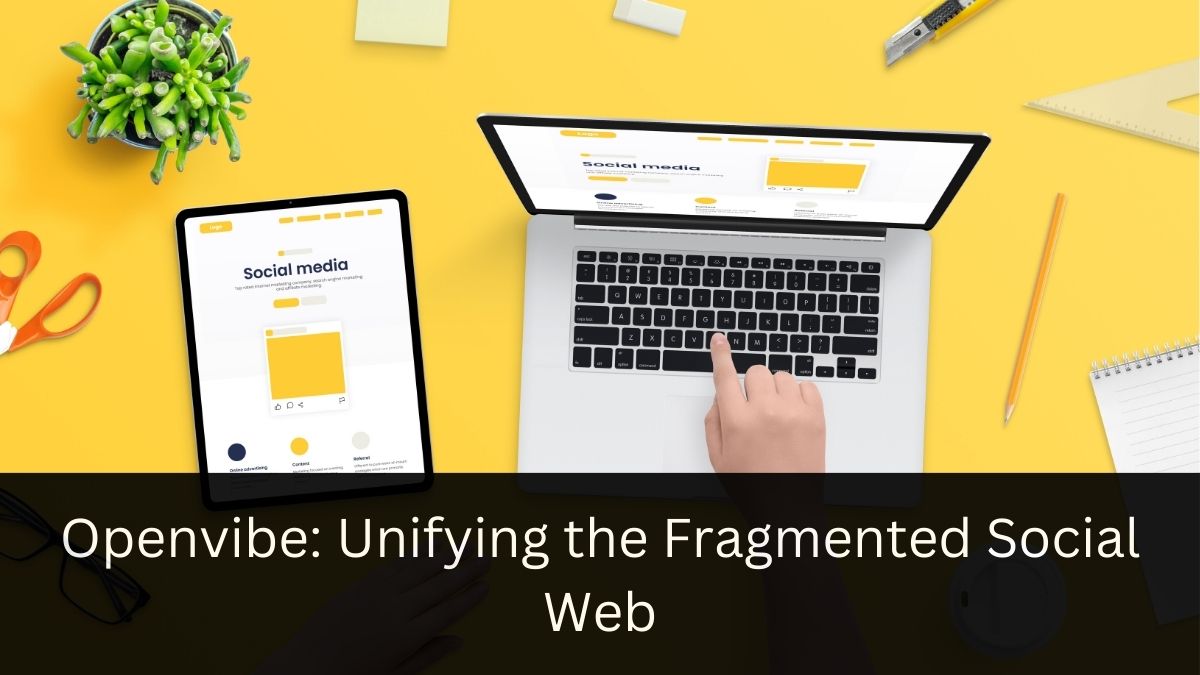Digital Marketing
Openvibe: Unifying the Fragmented Social Web

In the ever-evolving landscape of social media, a new player has emerged with a bold vision: to bridge the gap between various decentralized networks. Openvibe, a fresh entrant in the social app arena, is making waves by offering users a unified platform to engage with multiple networks simultaneously. As someone who’s struggled to keep up with the proliferation of social platforms, I find this concept both intriguing and potentially game-changing.
The Rise of Decentralized Social Networks
Since Elon Musk’s controversial acquisition of Twitter (now X) in 2022, we’ve witnessed a surge in alternative social platforms. Mastodon, Bluesky, Nostr, and Threads have all gained traction, appealing to users seeking more control over their online experiences. However, this diversification has come at a cost: fragmentation.
I remember the early days of social media when having a Facebook account was enough to stay connected. Now, I find myself juggling multiple apps, each with its own ecosystem and user base. It’s exhausting, and I’m not alone in feeling this way.
Enter Openvibe: A Unified Solution
Openvibe aims to solve this very problem. The app’s CEO, Matej Svancer, puts it succinctly: “Openvibe’s goal is to lower the barrier for new users coming to this space. I believe the open social space can challenge legacy social media, but only if it’s united.”
Key Features of Openvibe:
- Combined Timeline: Users can view posts from Mastodon, Nostr, Bluesky, and soon Threads, all in one feed.
- Cross-Posting Capabilities: Share content across multiple networks simultaneously.
- Unified Trending Section: Stay updated on what’s popular across various platforms.
- Seamless Integration: Connect your existing accounts without the need for additional servers or mirror accounts.
The Journey to Openvibe
The path to Openvibe’s creation is a testament to the rapidly changing social media landscape. The Czech Republic-based team initially worked on a Twitter client called Tweetoshi in 2022. However, Musk’s acquisition of Twitter prompted a pivot towards the open social web.
This adaptability speaks volumes about the team’s commitment to meeting user needs. As Svancer explains, “We also experienced this problem ourselves, and Openvibe is an answer to that.”
The Technical Challenge of Unification
One of the most impressive aspects of Openvibe is its ability to overcome the technical hurdles of integrating different social protocols. Mastodon uses ActivityPub, Bluesky operates on the AT Protocol, and Nostr has its own decentralized approach. Bringing these disparate systems together in a seamless user experience is no small feat.
As a tech enthusiast, I’m fascinated by the engineering challenges this must have presented. The team’s success in creating a unified interface speaks to their technical prowess and innovative thinking.
The Growing Need for Aggregation
Openvibe isn’t alone in recognizing the need for social media aggregation. Other projects, like Tapestry from the former developers of Twitterrific, and an unnamed project from Reeder’s developer, are also in the works. This trend underscores the growing demand for tools that help users manage their increasingly fragmented online presence.
I’m reminded of the early days of RSS readers, which allowed users to aggregate content from various sources. Openvibe feels like a natural evolution of this concept, adapted for the age of decentralized social media.
Looking to the Future
While Openvibe is currently available as a free app on iOS and Android, the team has ambitious plans for the future:
- Desktop Version: Expanding beyond mobile to cater to users who prefer larger screens.
- Subscription Model: A planned revenue stream to support ongoing development.
- Enhanced Threads Support: Leveraging the newly available Threads API for broader integration.
These plans suggest a long-term commitment to the product and a vision for sustainable growth.
The Potential Impact on Social Media Landscape
If Openvibe succeeds in its mission, it could significantly alter how we interact with social media. By lowering the barriers between different networks, it may encourage more cross-platform engagement and reduce the “walled garden” effect that currently dominates the social media landscape.
Imagine being able to engage with a diverse range of communities and perspectives without constantly switching apps. This could lead to a more inclusive and dynamic online discourse.
Challenges and Considerations
While Openvibe’s concept is promising, it’s not without potential challenges:
- Privacy Concerns: Aggregating data from multiple platforms may raise questions about data handling and security.
- Platform Cooperation: The success of Openvibe partly depends on the continued openness of the platforms it integrates.
- User Adoption: Convincing users to adopt yet another app, even if it simplifies their social media experience, could be a hurdle.
Conclusion: A Step Towards a More Connected Open Web
Openvibe represents a bold attempt to unify the fragmented world of decentralized social media. Its success could pave the way for a more interconnected and user-friendly open web.
As we navigate the ever-changing landscape of online communication, tools like Openvibe offer a glimpse of a future where the boundaries between platforms become less rigid. For those of us who value connection but feel overwhelmed by the proliferation of social networks, this development is worth watching closely.
